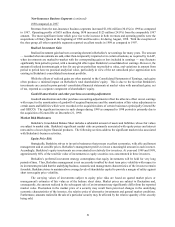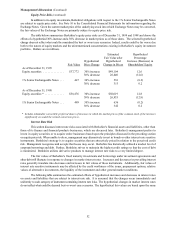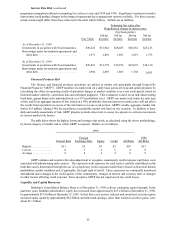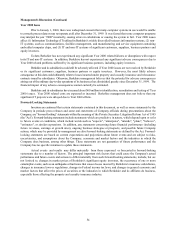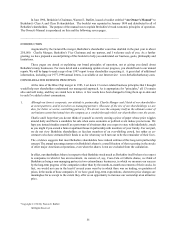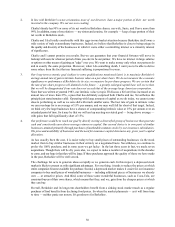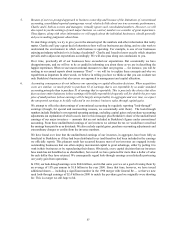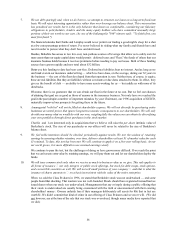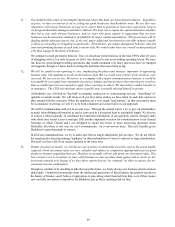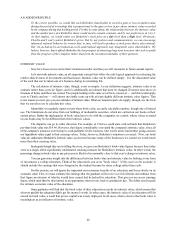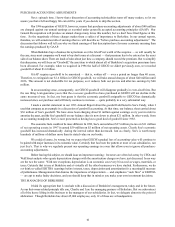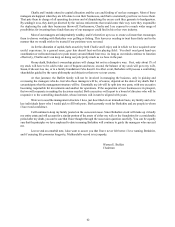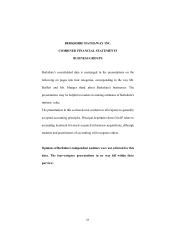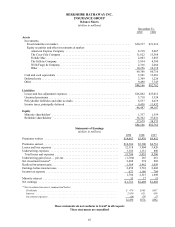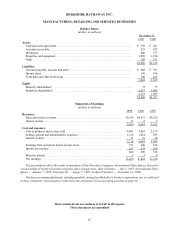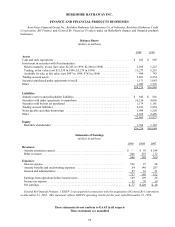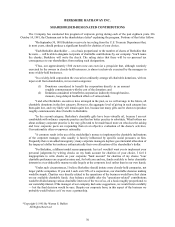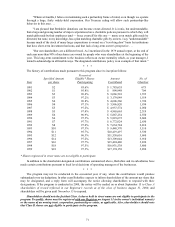Berkshire Hathaway 1999 Annual Report Download - page 62
Download and view the complete annual report
Please find page 62 of the 1999 Berkshire Hathaway annual report below. You can navigate through the pages in the report by either clicking on the pages listed below, or by using the keyword search tool below to find specific information within the annual report.61
PURCHASE-ACCOUNTING ADJUSTMENTS
Next: spinach time. I know that a discussion of accounting technicalities turns off many readers, so let me
assure you that a full and happy life can still be yours if you decide to skip this section.
Our 1996 acquisition of GEICO, however, means that purchase-accounting adjustments of about $40 million
are charged against our annual earnings as recorded under generally accepted accounting principles (GAAP). Our
General Re acquisition will produce an annual charge many times this number, but we don’t have final figures at this
time. So the magnitude of these charges makes them a subject of importance to Berkshire. In our annual reports,
therefore, we will sometimes talk of earnings that we will describe as "before purchase-accounting adjustments." The
discussion that follows will tell you why we think earnings of that description have far more economic meaning than
the earnings produced by GAAP.
When Berkshire buys a business for a premium over the GAAP net worth of the acquiree — as will usually be
the case, since most companies we'd want to buy don't come at a discount — that premium has to be entered on the asset
side of our balance sheet. There are loads of rules about just how a company should record the premium. But to simplify
this discussion, we will focus on "Goodwill," the asset item to which almost all of Berkshire's acquisition premiums have
been allocated. For example, when we acquired in 1996 the half of GEICO we didn't previously own, we recorded
goodwill of about $1.6 billion.
GAAP requires goodwill to be amortized — that is, written off — over a period no longer than 40 years.
Therefore, to extinguish our $1.6 billion in GEICO goodwill, we will take annual charges of about $40 million until
2036. This amount is not deductible for tax purposes, so it reduces both our pre-tax and after-tax earnings by $40
million.
In an accounting sense, consequently, our GEICO goodwill will disappear gradually in even-sized bites. But
the one thing I can guarantee you is that the economic goodwill we have purchased at GEICO will not decline in the
same measured way. In fact, my best guess is that the economic goodwill assignable to GEICO has dramatically
increased since our purchase and will likely continue to increase — quite probably in a very substantial way.
I made a similar statement in our 1983 Annual Report about the goodwill attributed to See's Candy, when I
used that company as an example in a discussion of goodwill accounting. At that time, our balance sheet carried about
$36 million of See's goodwill. We have since been charging about $1 million against earnings every year in order to
amortize the asset, and the See's goodwill on our balance sheet is now down to about $21 million. In other words, from
an accounting standpoint, See's is now presented as having lost a good deal of goodwill since 1983.
The economic facts could not be more different. In 1983, See's earned about $27 million pre-tax on $11 million
of net operating assets; in 1997 it earned $59 million on $5 million of net operating assets. Clearly See's economic
goodwill has increased dramatically during the interval rather than decreased. Just as clearly, See's is worth many
hundreds of millions of dollars more than its stated value on our books.
We could, of course, be wrong, but we expect that GEICO's gradual loss of accounting value will continue to
be paired with major increases in its economic value. Certainly that has been the pattern at most of our subsidiaries, not
just See's. That is why we regularly present our operating earnings in a way that allows you to ignore all purchase-
accounting adjustments.
Before leaving this subject, we should issue an important warning: Investors are often led astray by CEOs and
Wall Street analysts who equate depreciation charges with the amortization charges we have just discussed. In no way
are the two the same: With rare exceptions, depreciation is an economic cost every bit as real as wages, materials, or
taxes. Certainly that is true at Berkshire and at virtually all the other businesses we have studied. Furthermore, we do
not think so-called EBITDA (earnings before interest, taxes, depreciation and amortization) is a meaningful measure
of performance. Managements that dismiss the importance of depreciation — and emphasize "cash flow" or EBITDA
— are apt to make faulty decisions, and you should keep that in mind as you make your own investment decisions.
THE MANAGING OF BERKSHIRE
I think it's appropriate that I conclude with a discussion of Berkshire's management, today and in the future.
As our first owner-related principle tells you, Charlie and I are the managing partners of Berkshire. But we subcontract
all of the heavy lifting in this business to the managers of our subsidiaries. In fact, we delegate almost to the point of
abdication: Though Berkshire has about 45,000 employees, only 12 of these are at headquarters.


